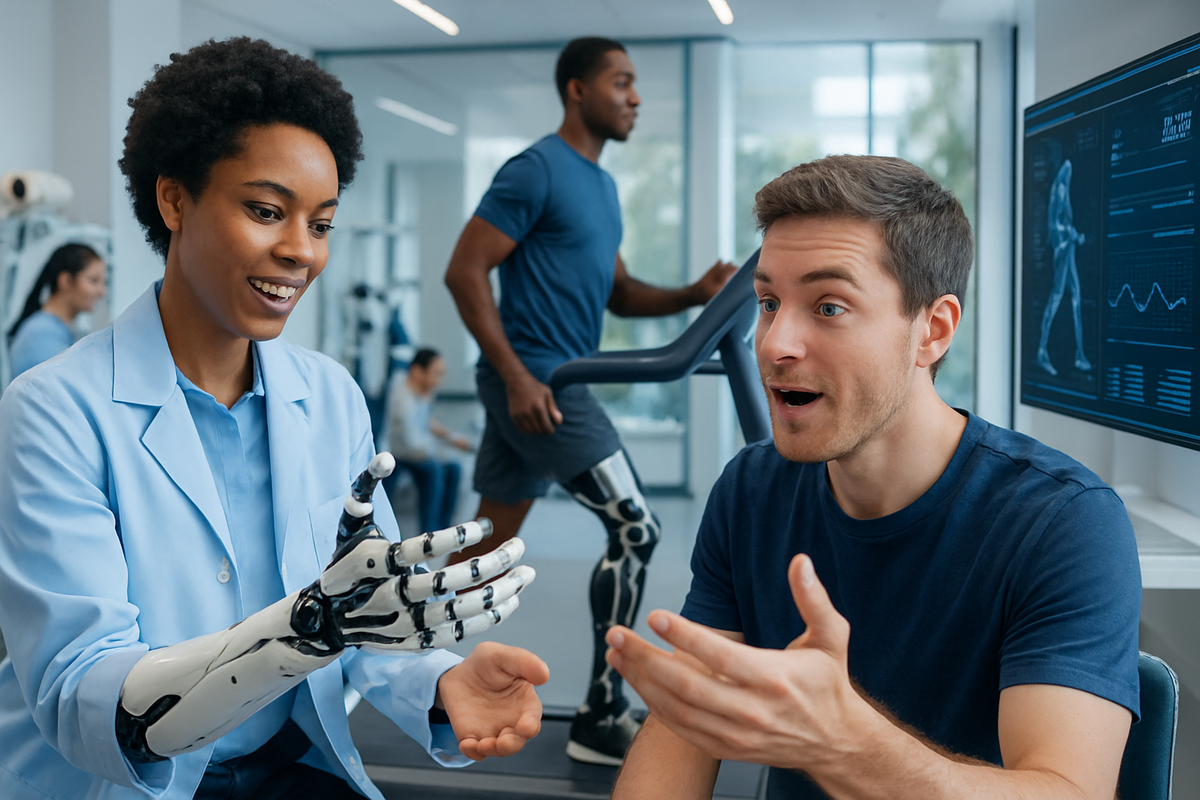The Bionic Revolution: How Cloud, 5G, and AI Are Creating Superhuman Prosthetics
Step into the Bionic Revolution where prosthetics defy limits, powered by AI, cloud, and 5G. Discover how next-gen limbs not only restore what's lost but amplify human potential—transforming science fiction into everyday reality.

Welcome to the Age of Superhuman Prosthetics
What does it mean to be human in 2025? For millions, the answer is being rewritten—one neural impulse, cloud algorithm, and 5G data packet at a time. The Bionic Revolution isn’t coming; it’s already here, and it’s transforming prosthetics from medical necessity into a fusion of science fiction and everyday heroism.
“We're no longer talking about replacing what was lost—we're talking about amplifying what’s possible.”
Cloud, AI, and 5G: The Triple Threat Powering Next-Gen Limbs
Let’s break down the tech cocktail making this all possible:
- AI-driven prosthetics decode user intent and adapt in real-time, learning from every movement.
- Cloud computing crunches massive data sets—think gait analysis, grip patterns, and even emotional cues—so your limb gets smarter the more you use it.
- 5G connectivity means near-zero lag and seamless updates, enabling limbs to sync with remote servers and clinicians for instant tweaks or troubleshooting.
Translation: Your bionic arm could soon get a firmware update as easily as your phone, and your hand might literally feel the difference.
Breakthroughs in Neurotechnology: Touch, Movement, and Mind-Machine Marvels
Recent clinical studies have leapt beyond Hollywood dreams. At the University of Chicago, researchers have enabled bionic hand users to feel edges, textures, and motion—all by tapping into the brain’s sensory circuits. Imagine gripping a steering wheel and actually knowing when your fingers slide along the leather. That’s not movie magic; it’s neurotechnology, funded by the NIH and validated in real people.
How? By implanting electrodes in sensory and motor regions of the brain, bionic limbs can translate thoughts into movement—and now, remarkably, send sensations back. This closes the feedback loop that’s long separated prosthetics from natural limbs.
“For the first time, users are identifying letters by touch alone—restoring not just function, but feeling.”
Expect the next wave: synthetic skin with advanced proprioception, so users can sense where their limb is in space, even with their eyes closed.
5G-Connected Prosthetics: Limbs That Think in the Cloud
Why is 5G such a game-changer? Because many tasks—like AI-driven movement prediction or personalized grip adjustments—are too complex for onboard chips. Enter cloud-connected bionics:
- Local processors handle split-second reflexes (catch that falling mug!).
- Edge/cloud servers analyze data, optimize settings, and pipe back improvements in real time.
In 2025, pilot projects have shown 5G-enabled limbs can offload heavy computation, slashing latency and raising performance. The result? Limbs that feel more natural, react faster, and can be fine-tuned from anywhere—sometimes even by your clinician, while you’re sipping coffee at home.
Meet the Disruptors: Startups and Real-World Heroes
If you think this is all academic, meet Open Bionics, the UK-based startup making 3D-printed, fully functional bionic arms. Their Hero Arm isn’t just affordable; it’s stylish, customizable, and now available in major US cities. Each limb is tailored with muscle sensors, offering six grip types and even superhero-themed covers. (Yes, you can be Iron Man at work. Your move, Tony Stark.)
And it’s not just about arms. The Bionic Breast Project is restoring touch for post-mastectomy patients, while Ukrainian soldiers are returning to the front lines with bionic hands that outperform anything seen a decade ago.
“The coolest thing about my bionic arm? It keeps getting better, just like my smartphone.”
Actionable Insights: What Patients, Families, and Clinicians Should Know
- Stay curious: The pace of innovation is dizzying. Subscribe to newsletters, join patient communities, and follow clinical trials.
- Ask about connectivity: If you’re exploring a new prosthetic, check if it supports remote updates, app integration, and real-time feedback.
- Embrace training: Next-gen limbs are smart, but user training is still key. Many startups offer gamified learning and telehealth support.
- Advocate for access: Insurance and rehab programs are catching up, but it’s often up to patients and families to push for the latest tech.
- Dream big: Whether you’re a STEM student, clinician, or tech enthusiast, the field is wide open for new ideas—robotics, AI, ethics, and beyond.
What’s Next? The Future of Human Enhancement
Imagine limbs that communicate with your smartwatch, adjust to your mood, and recharge from your own movement. From self-powered cardiac implants to brain-computer interfaces that restore senses thought lost forever, the future is equal parts profound and playful.
The big question: Will bionics simply replace what’s missing, or will they make us more than human? If you’re reading this, you’re already part of the conversation. And if you want to be part of the community shaping this revolution, there’s never been a better time to get involved.
Join the Conversation—Become a Funaix Insider
Love this deep dive? Subscribe for free at Funaix and unlock smart news, perks, and the chance to comment on every story. Only subscribers can join our lively comments—so don’t miss out. It’s free (for now), and your future self will thank you.
Written by the Funaix editorial team, August 15, 2025. For sources, research links, and further reading, see the article references above.




